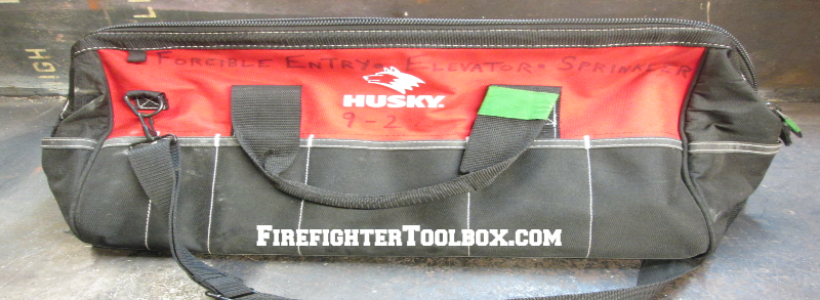How To Build A Forcible Entry Bag – Part 1
Compared to most, my department was fairly well equipped with forcible entry tools when I hired on 14 years ago. Of course, almost every single fire department in the country carries the irons these days, but my department also carried lock-pulling K-Tools and Truckman’s Tools on every engine and ladder in the city. In my area – suburban Detroit – carrying through-the-lock tools is considered pretty enlightened.
The Problem
The only trouble was, for my first ten years, these tools were found in two different compartments. And the small, ancillary tools so often used in conjunction with lock-pullers, things like screwdrivers and vise-grips, were kept in a heavy toolbox in yet a third compartment.
So, for every low-priority call that could benefit from through-the-lock forcible entry, these tools would have to be rounded up by walking around the truck and pulling out EXACTLY what was needed and carried to the scene in the hands or pockets of the crew. Because it was a time-consuming pain in the rump, it was rarely done. And not being properly equipped is one of the proven causes of broken glass, kicked-in doors, and other forms of unnecessary property damage.
The Solution
It just made sense to wrangle all these small tools used for a common purpose, and keep them together in a single place, housed in a way that one crewmember could easily carry everything that was needed without being delayed or awkwardly encumbered. I didn’t invent the idea, but this is how my department got forcible entry bags on every piece of apparatus. Now, a single firefighter can grab a small tool bag in one hand, and the irons in the other hand, and be a one-man wrecking crew — fully equipped to get into just about any home or business in America.
Also, it allowed me to divest my pockets of some of the small tools weighing me down. Small things that would be used at the front door of a building, but rarely needed once inside, could STAY outside and be collected later after the incident.
Always Bring The Irons!
Let’s be clear on this point. Regardless of the nature of the scene, or your plan for getting in, if you suspect that you may have to force entry, take the bag with you … but make sure that you or someone coming up right behind you is also carrying the irons.
Through-the-lock efforts sometimes fail for reasons beyond our control — a weak cylinder breaks off in pieces, a latch-mechanism get mangled and won’t turn, there is a sliding-bolt in place that’s not visible from the outside — you just can’t control or predict some things. Should your efforts at pulling the lock-face or manipulating the latch fail to open the door in a timely manner, there should be a seamless transition to conventional prying, one that doesn’t involve making a mad dash back to the truck.
That’s the beauty of the forcible entry bag idea: one firefighter with the married irons in one arm and the forcible entry bag slung over his other shoulder can easily carry ALL the tools necessary to open nearly every common type of door and lock in his or her district.
Fiscally Responsible
Now, for me, it was a pretty easy sell to the bosses. We had the tools already. Although I’ve since upgraded our lock-pulling tools, initially I just needed permission to procure a few tool bags.
If you work for a department that has NO through-the-lock tools at all, and you have to start from scratch, it will likely cost between $200-250 to outfit each bag. That’s hardly chickenfeed, but if you remind the chief what a contractor would charge in time and materials to replace a lock-set, door, and frame after a conventional halligan force, a couple hundred bucks might seem like a bargain for your citizens.
Photos courtesy of Sean Wilson.










